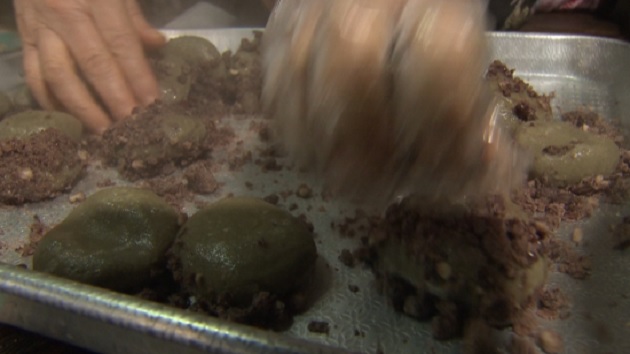
This week on Jeju: A to Z, Todd Thacker takes a brief look at omegi tteok, a rustic Jeju treat with an interesting origin story.
Until very recently, Jeju Island was especially remote and rural. Islanders had to be resourceful and self-sufficient, making due with what would grow here. As time wore on, distinct differences in Jeju’s cuisine emerged.
Tteok, a pounded rice cake that is served at ceremonies or as a special treat, is an excellent example.
On the mainland you can find dozens of varieties, some of which incorporate pumpkin, corn, or green tea ? whatever ingredients might be on hand.
[Slug CG] Porous volcanic soil makes growing rice difficult
On volcanic Jeju Island, with porous rock and very little freestanding water, this meant using millet, rather than rice, in its famous omegi tteok.
[Slug CG] Millet boiled and rolled in ground red beans
Islanders rolled the simple millet mixture into ovals with a sunken center, and then boiled them in water. The finished product was then rolled in ground red beans as a flavorful topping.
And allowing nothing to go to waste, the left-over dough would be mixed with yeast and fermented into a cloudy alcoholic beverage called omegi sul.
[Slug CG] Modern omegi tteok uses rice, sugar, red bean paste
These days, of course, Jeju life has become more affluent and tastes have changed. Omegi tteok as you find it today might look similar with its red bean exterior, but inside rice, sugar and even red bean paste, are now the main ingredients.
[Slug CG] Todd Thacker
Still, the rustic roots of omegi tteok remain intact, helping to keep the Jeju people well familiar in their traditional cuisine and hardscrabble history.
Todd Thacker KCTV





